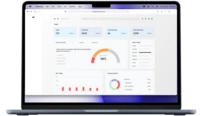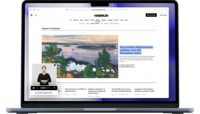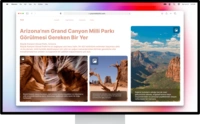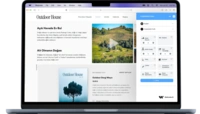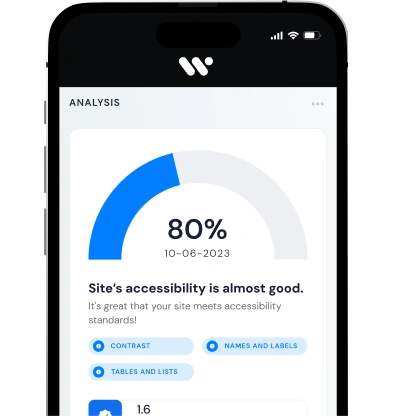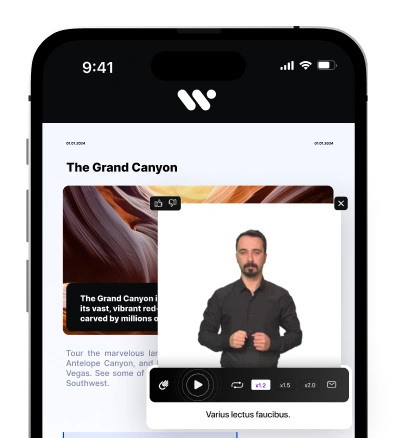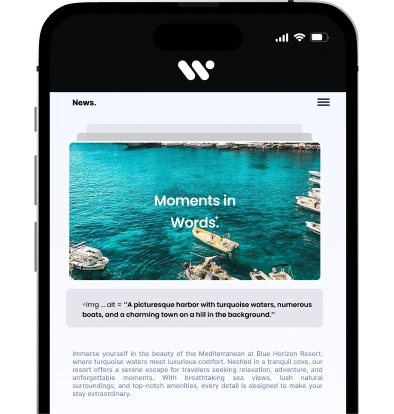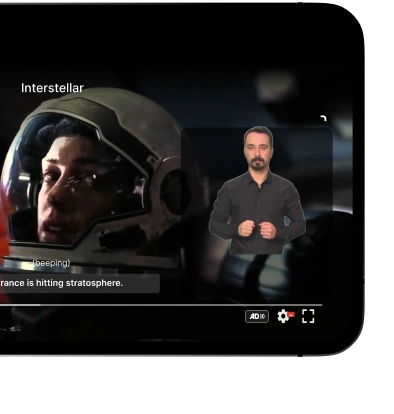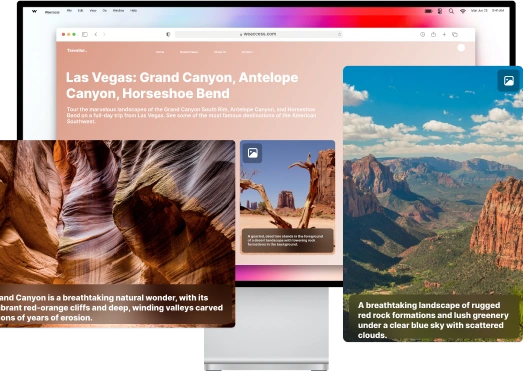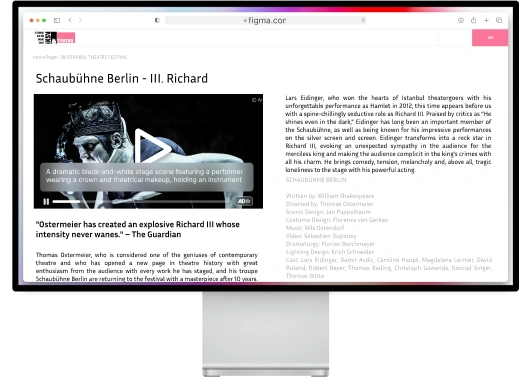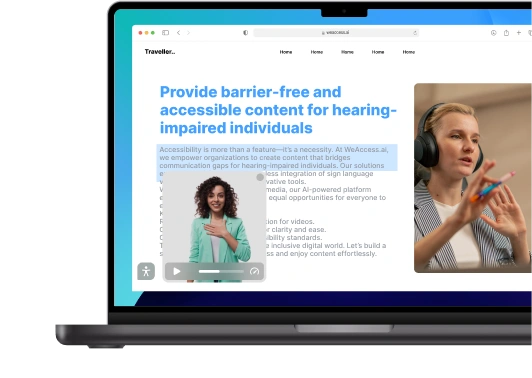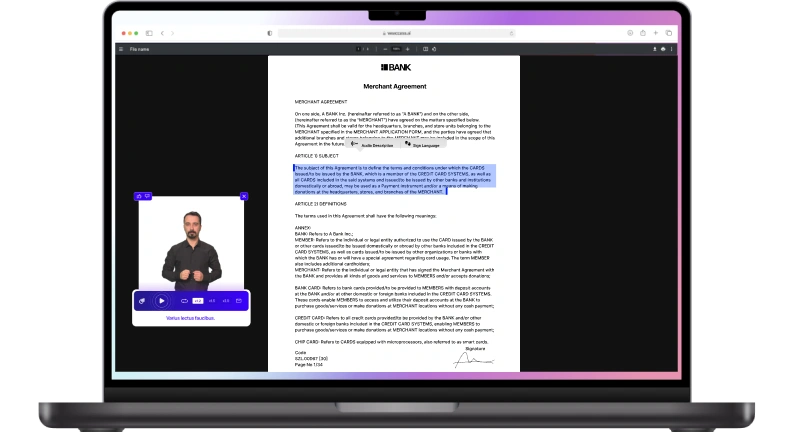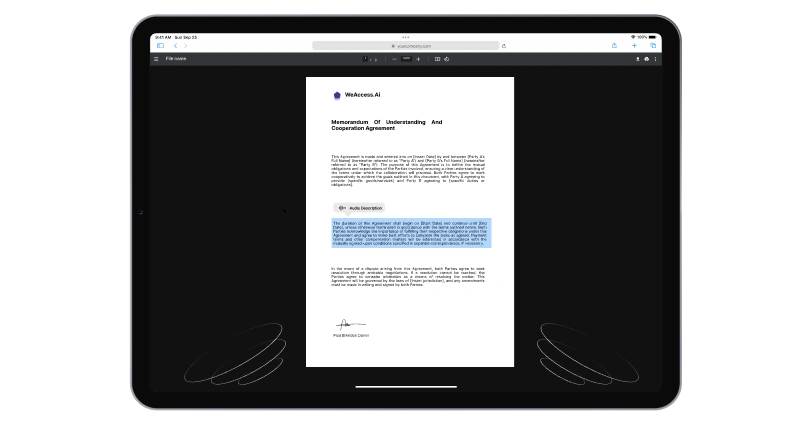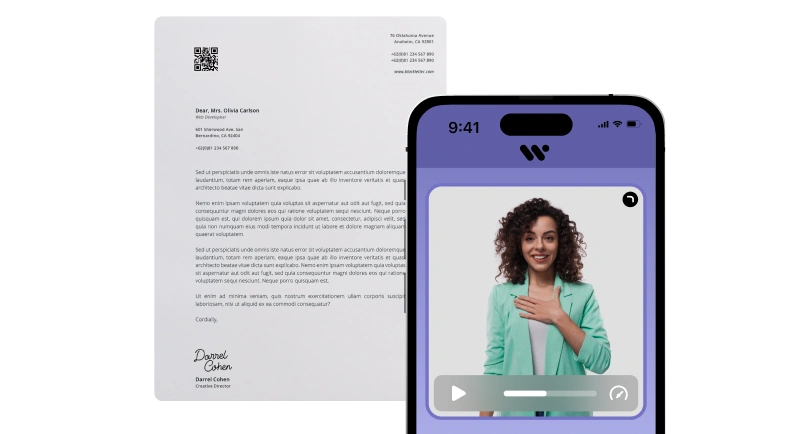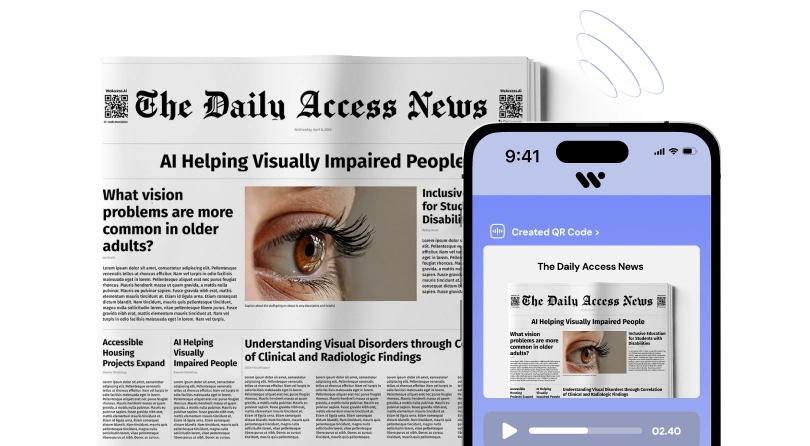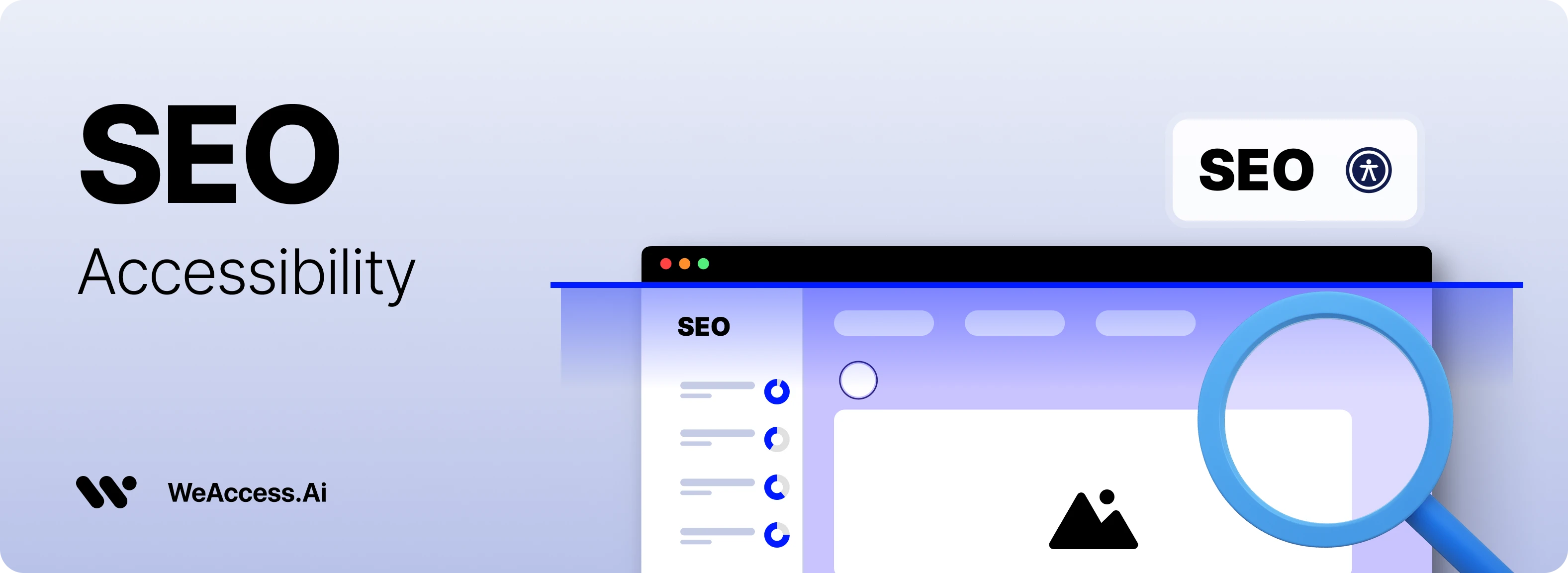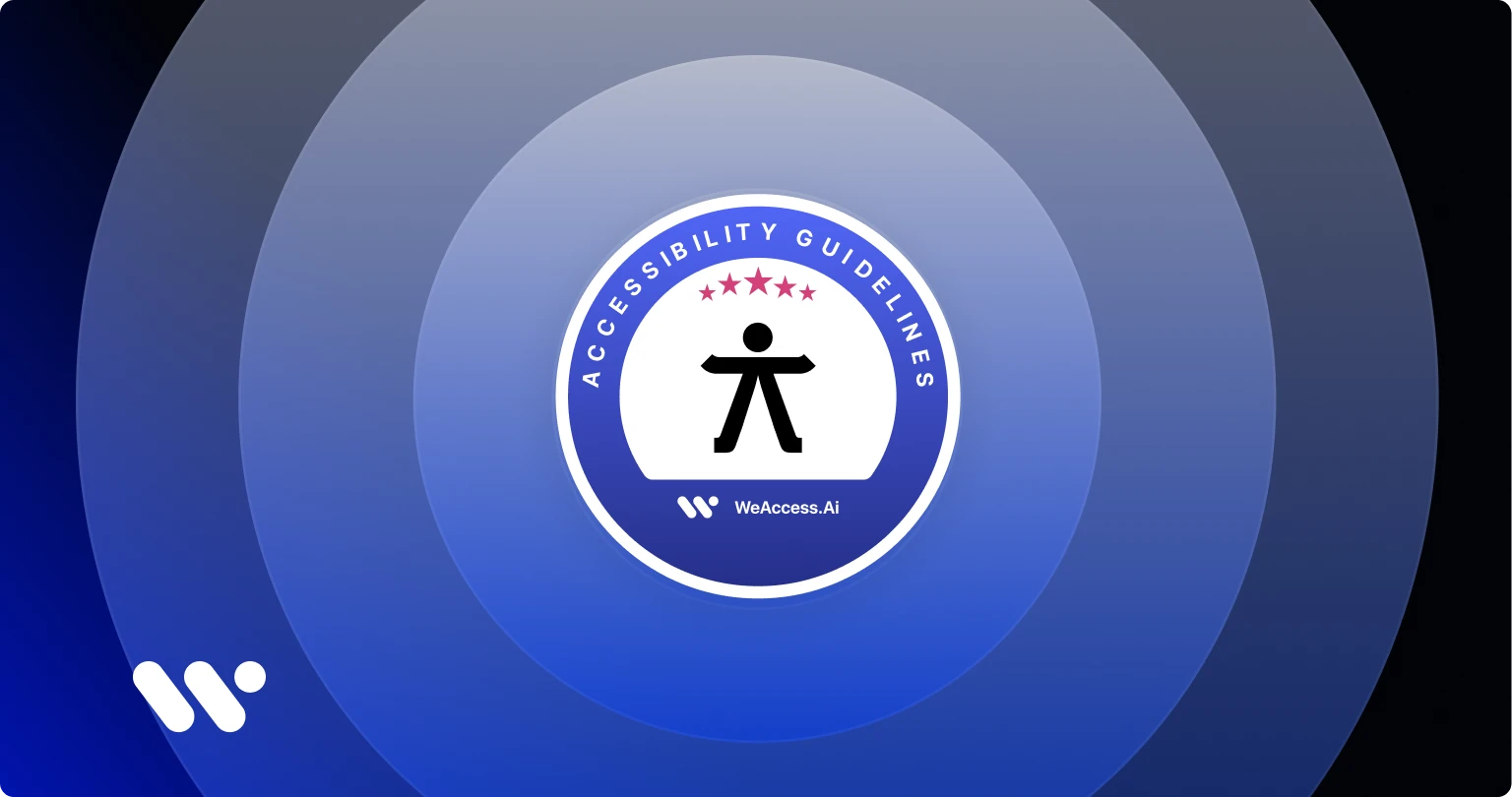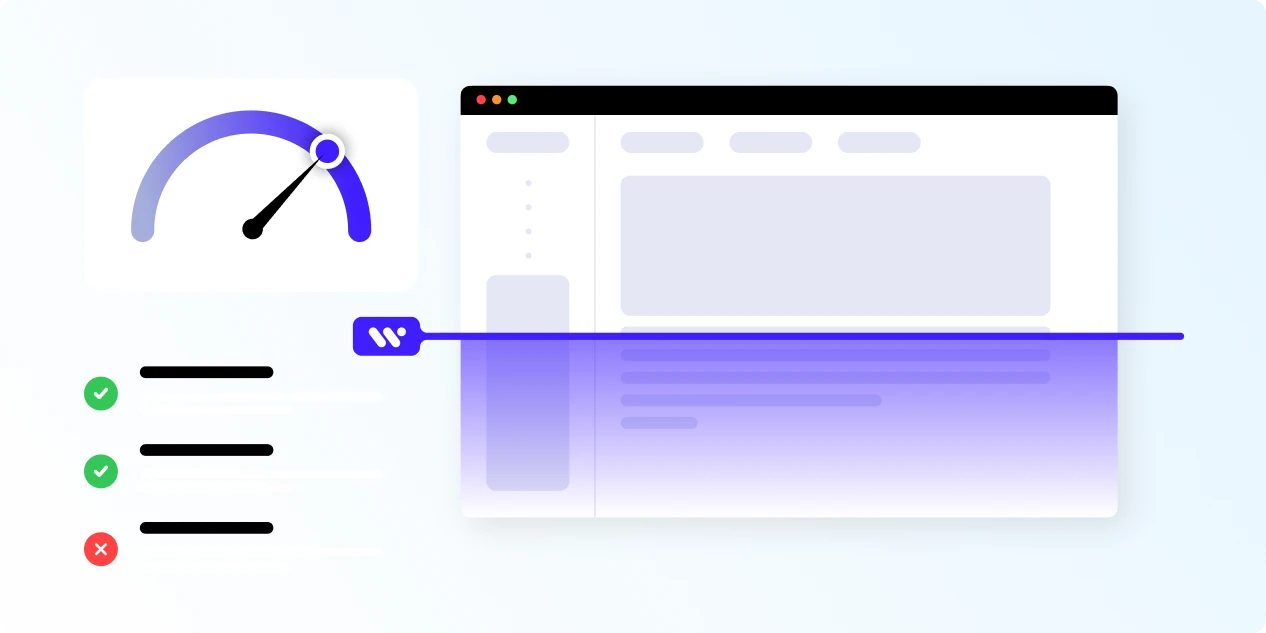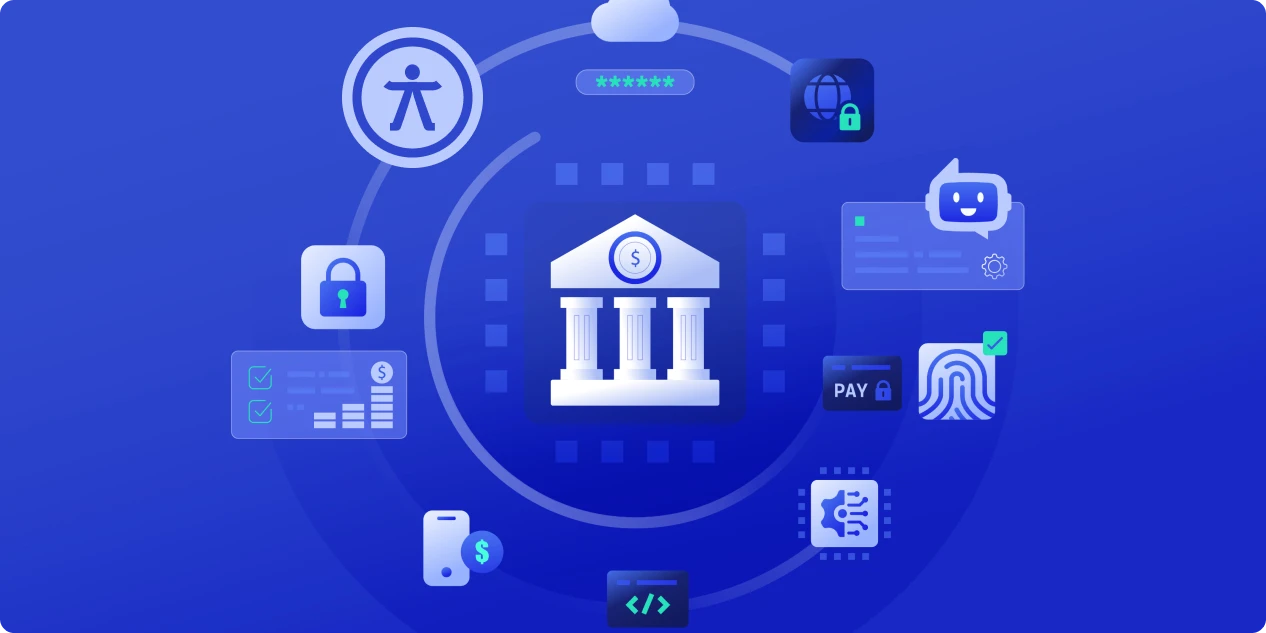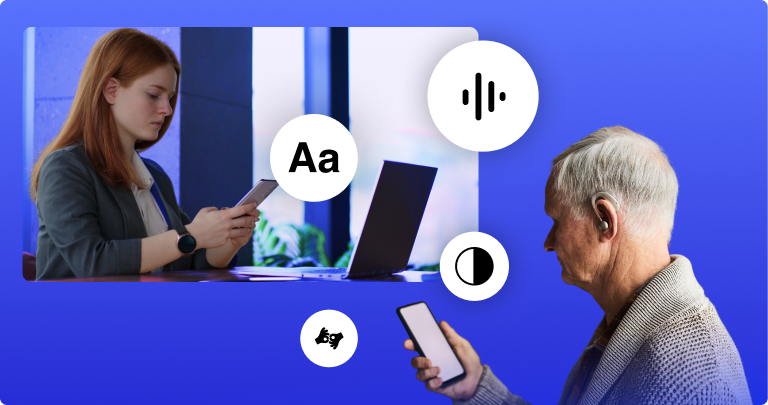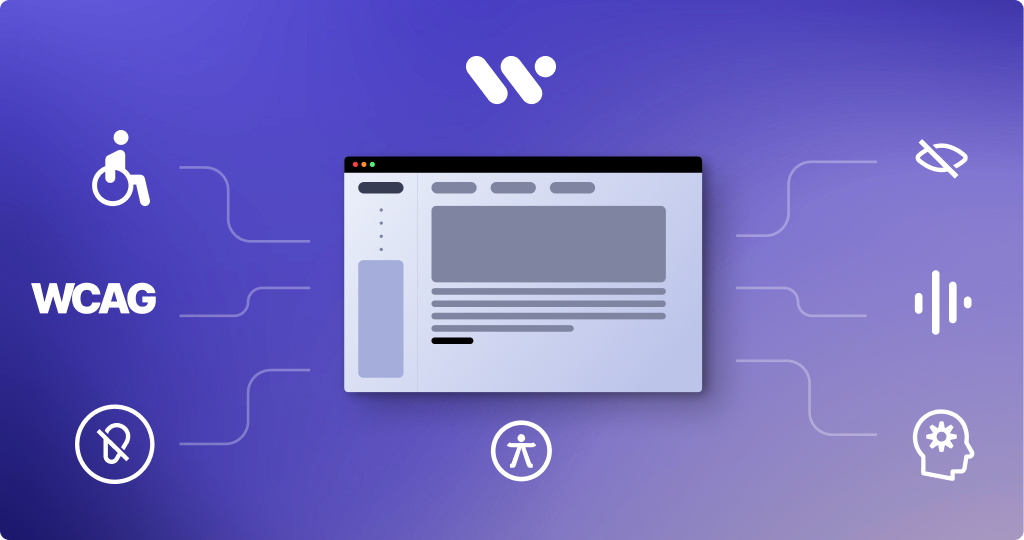SEO accessibility is a strategic approach that enhances both user experience and search engine visibility. By adhering to the Web Content Accessibility Guidelines (WCAG), websites become more navigable for users with disabilities, leading to increased engagement and reduced bounce rates. This improved user experience indirectly contributes to better search engine rankings
Introduction to SEO Accessibility
SEO accessibility is the practice of designing websites that are both user-friendly and optimized for search engines. While not a direct ranking factor, accessibility enhances user experience, leading to improved engagement metrics such as reduced bounce rates and increased time on site. This, in turn, can positively influence SEO performance. enhancing crawlability and content comprehension for search engines.
Studies have shown that websites with improved accessibility see significant increases in traffic, with some experiencing up to a 12% rise in overall traffic and 73.4% observing increased organic traffic after implementing accessibility solutions.(Src:https://www.semrush.com/news/242494-study-is-web-accessibility-key-to-driving-organic-traffic)
Therefore, integrating web accessibility SEO practices is essential for creating inclusive websites that perform well in search engine results.
Why Accessibility Matters for SEO
Accessibility helps SEO by enhancing user experience, which indirectly influences search engine rankings. Websites that are accessible are often better structured, leading to improved crawlability and indexing by search engines. Additionally, accessible sites tend to have lower bounce rates and higher engagement metrics, which are positive signals to search engines. Furthermore, accessible websites can reach a broader audience, including individuals with disabilities, thereby increasing potential traffic and visibility. Incorporating accessibility practices aligns with SEO goals, creating a more inclusive and user-friendly web environment.
Benefits of Combining SEO and Accessibility
Integrating SEO and accessibility offers numerous advantages:
- Enhanced Crawlability: Accessible websites are structured in a way that makes it easier for search engine bots to index content, improving search visibility.
- Improved User Engagement: Features like clear navigation and readable content enhance user experience, leading to longer site visits and reduced bounce rates.
- Increased Organic Traffic: Accessible sites often rank higher in search results, attracting more visitors.
- Broader Audience Reach: By accommodating users with disabilities, websites become accessible to a larger audience, expanding potential customer base.
Accessibility Considerations for Different Disabilities
SEO accessibility benefits all users, including those with cognitive, motor, and visual disabilities:
- Cognitive Disabilities: Simplified content and predictable navigation help users understand and interact with websites more easily.
- Motor Disabilities: Keyboard-friendly interfaces and voice navigation enable users with limited mobility to access content efficiently.
- Visual Disabilities: Screen reader compatibility, high-contrast text, and descriptive alt text ensure content is perceivable for users with visual impairments.
- Situational disabilities occur when environmental factors temporarily limit a user’s ability to access content, such as bright sunlight affecting screen visibility or noisy surroundings impacting audio comprehension. Designing for these scenarios improves overall accessibility and ensures a consistent user experience, which can enhance engagement metrics and support SEO accessibility
These practices not only improve user experience but also contribute to better SEO performance by increasing engagement and reach.
Understanding Accessibility Standards
Web Content Accessibility Guidelines (WCAG) are internationally recognized standards developed by the World Wide Web Consortium (W3C) to ensure web content is accessible to individuals with disabilities. These guidelines are organized around four principles: Perceivable, Operable, Understandable, and Robust (POUR), which serve as a foundation for creating accessible digital experiences.
ADA SEO Web Accessibility Standards
ADA compliance ensures websites are accessible to individuals with disabilities, aligning with the Americans with Disabilities Act. While not a direct ranking factor, adhering to ADA standards can enhance user experience and indirectly benefit SEO by improving site usability and engagement. Features like clear navigation, proper contrast, and alt text contribute to both accessibility and SEO performance.
Section 508 and Regulatory Compliance
Section 508 of the Rehabilitation Act mandates that federal agencies and their contractors ensure electronic and information technology is accessible to individuals with disabilities. Compliance with Section 508 is not only a legal requirement but also promotes inclusivity and equal access to information. Aligning with Section 508 standards can enhance user experience and potentially improve SEO by making content more accessible and user-friendly
Best Practices for Accessibility For SEO
Following accessibility best practices ensures websites are usable for everyone and support SEO goals. Key principles include prioritizing accessibility in design, adhering to recognized standards, and creating content that is perceivable, operable, understandable, and robust. Websites designed with accessibility in mind not only comply with legal requirements but also enhance user experience, engagement, and search engine visibility
1.Descriptive Links: Enhancing Accessibility and SEO
Descriptive links—hyperlinks with clear, meaningful text—are vital for both accessibility and SEO. They provide users, especially those relying on screen readers or keyboard navigation, with context about the link's destination, improving navigation and user experience. For instance, instead of using vague terms like "click here," it's more informative to use "Download the annual report".
2.Headings Hierarchy
A proper headings hierarchy organizes content logically, making it easier for users—including those with cognitive or visual disabilities—to navigate a website. It also helps search engines understand page structure and content relevance, boosting SEO accessibility and improving overall site ranking.
3.Plain Language
Plain language involves writing content that is clear, concise, and easy to understand for all users, including those with cognitive disabilities. It improves comprehension, reduces confusion, and enhances user experience.
4.Acronyms
Acronyms should be clearly defined when first used to ensure content is understandable for all users, including those with cognitive or new-language challenges. Properly explained acronyms improve readability and accessibility while also helping search engines interpret content accurately, supporting SEO accessibility.
Technical SEO for Accessibility
John Mueller, a Google Search Advocate, emphasizes that web accessibility and SEO are closely connected. Accessible websites improve user experience, which can indirectly benefit search rankings. Mueller highlights that while accessibility itself is not a direct ranking factor, optimizing for accessibility—such as clear structure, readable content, and proper headings—helps search engines better understand and index content
Integrating technical SEO with accessibility improves both user experience and search engine performance:
- Enhanced Crawlability – Accessible websites follow clear structure, helping search engines index content efficiently.
- Improved Search Rankings – Better usability and accessibility metrics can positively influence SEO performance and PageRank.
- Consistent SEO Performance – Accessible design supports SEO best practices across key elements like headings, links, and metadata
- Better Information Delivery – Ensures content is clear and usable for all users, enhancing engagement and overall site effectiveness
Largest Contentful Paint (LCP)
Largest Contentful Paint (LCP) measures how quickly the main content of a webpage loads, impacting both user experience and SEO. Faster LCP improves accessibility for users with slow connections or devices and signals search engines that the site delivers a performant, user-friendly experience, positively affecting rankings
First Input Delay (FID)
First Input Delay (FID) measures the time between a user’s first interaction and the browser’s response. Lower FID improves accessibility by ensuring that users, including those with motor disabilities, can interact with a website without frustration. Optimizing FID also benefits SEO, as search engines favor fast, responsive sites
Cumulative Layout Shift (CLS)
Cumulative Layout Shift (CLS) measures unexpected layout movements during page load. Minimizing CLS enhances accessibility by preventing confusion or misclicks for all users, including those with motor or cognitive disabilities. Improved CLS also supports SEO, as search engines favor stable, user-friendly pages.
Interaction to Next Paint (INP)
Interaction to Next Paint (INP) measures responsiveness from user interaction to the next visual update. Lower INP improves accessibility by providing timely feedback for users with motor or cognitive disabilities, enhancing overall usability. Optimizing INP also supports SEO, as search engines reward responsive, user-friendly websites
Role of Semantic HTML
Semantic HTML plays a crucial role in both accessibility and SEO. Using meaningful HTML elements helps search engines understand page structure and content hierarchy, improving crawlability and relevance in search results. For accessibility, semantic tags combined with ARIA labels and attributes like ARIA-hidden ensure assistive technologies can accurately interpret and navigate content, enhancing user experience for people with disabilities.
Alt Text and Images Optimization
Using alt text and alt attributes for images is essential for both accessibility and SEO. Alt text provides a textual description of images, enabling screen readers to convey content to users with visual impairments. Search engines also use alt text to understand image content, improving search rankings and enhancing overall SEO performance
Metadata and Markup
Key metadata and markup practices for accessibility and SEO include:
- Tag (metadata) – Provides context for search engines and assistive technologies.
- Page Layout – Structured layout improves readability and navigation.
- Markup Language – Semantic HTML enhances content understanding by search engines.
- Anchor Text – Descriptive links improve accessibility and SEO relevance.
- Breadcrumb Navigation – Helps users and search engines understand site hierarchy.
- Tab (interface) – Properly labeled tabs support keyboard navigation and screen readers.
Crawlability and Site Structure
Optimizing crawlability and site structure ensures search engines can efficiently index your website:
- Website Design & Layout – Clear page layout and intuitive web design improve usability and navigation.
- Web Content Organization – Structured web content helps search engines like Googlebot understand page hierarchy.
- Sitemaps & URLs – Proper sitemaps and clean URLs guide crawlers and enhance indexing.
- PDF & Other Formats – Optimizing PDFs and multimedia content ensures all resources are accessible.
- Web Development & Browsers – Standards-compliant web development improves accessibility across web browsers.
- Usability – Enhancing user experience supports engagement metrics that indirectly boost SEO.
User Experience and SEO Accessibility
Integrating user experience with SEO accessibility offers key benefits:
- Accessible Website – Ensures all users, including those with disabilities, can navigate and interact with content.
- Accessibility for Users – Improves satisfaction, engagement, and retention.
- Users and Search Engines – Well-structured sites are easier for search engines to crawl and index.
- User Experience Design – Prioritizing usability enhances overall site performance.
- Accessible Web – Creates an inclusive digital environment, benefiting both users and SEO outcomes.
Navigation and Interface
Effective navigation and interface design is essential for both accessibility and SEO.
- Navigation – A well-structured menu and logical site hierarchy help users quickly locate content and assist search engines in crawling pages efficiently.
- Tab (interface) – Keyboard-accessible tabs allow users to switch between sections without a mouse, improving accessibility for individuals with motor impairments.
- Computer Keyboard – Ensuring all interactive elements are operable via keyboard enables seamless navigation for users relying on assistive technology.
- Computer Mouse – Optimized clickable areas, such as buttons and links, improve usability for all users while reducing errors and frustration.
- Context – Clear labels, ARIA roles, and descriptive link text provide context, helping both users and search engines understand the purpose and destination of interface elements.
Accessibility Across Devices
Ensuring accessibility across devices enhances user experience and SEO performance:
- Responsive Design – Websites must adapt seamlessly to desktops, tablets, and mobile devices.
- Web Accessibility Journey – Continuously improving accessibility ensures consistent usability for all users over time.
- Web Accessibility Developer – Developers play a key role in implementing standards and best practices for multi-device accessibility.
- Performance & Accessibility Best Practices SEO – Optimizing load times and ensuring accessible elements across devices benefits both users and search engine rankings.
Assistive Technologies
Key assistive technologies support accessibility and enhance SEO indirectly by improving user engagement:
- Screen Reader – Reads web content aloud for users with visual impairments, making sites navigable.
- Web Accessibility Initiative (WAI) – Provides guidelines and resources to ensure content is compatible with assistive technologies.
- Visual Impairment Support – Tools like magnifiers and high-contrast modes help visually impaired users access content.
- Hearing Loss Support – Captions, transcripts, and audio alternatives make multimedia accessible to users with hearing impairments.
- Assistive Technology Integration – Ensures that websites are usable with various tools, improving inclusivity and user satisfaction.
Communication and Errors
Clear communication and error handling are vital for accessibility and user experience. Error messages should be descriptive and easy to understand, guiding users to correct issues efficiently. Providing notifications via email or on-page messages enhances usability, while maintaining readability ensures all users can navigate and interact with the website effectively. Proper communication reduces frustration and supports overall accessibility goals.
Improving Website SEO Accessibility
Key steps to improve website accessibility and SEO include:
- Assess Accessibility Issues – Identify barriers that prevent users from accessing content.
- Make Your Website Accessible to People – Ensure all users, including those with disabilities, can navigate and use your site effectively.
- Improve Accessibility – Implement inclusive design practices to enhance usability and engagement.
- Making It Easier – Simplify navigation, content structure, and interaction to benefit all users.
- Create an Accessible Website – Integrate accessibility from the start for better SEO and compliance.
- Enhance Website’s Accessibility – Regularly review and update content to maintain accessibility standards.
Content Optimization and Marketing
Optimizing content for both digital marketing and accessibility enhances visibility and drives traffic to your website. Utilizing SEO-friendly keywords in blogs and marketing materials ensures search engines understand your content, while adhering to digital accessibility best practices makes it usable for all audiences. This approach not only increases reach but also prevents issues like spamdexing, creating a sustainable strategy for long-term engagement and improved search rankings.
Implementing these practices can lead to improved SEO metrics such as increased organic traffic, better user engagement, and higher search engine rankings. By focusing on both accessibility and SEO, you create a more inclusive and discoverable online presence.
Accessible Content for SEO
Creating accessible content ensures that all users can interact with your website while also supporting SEO. Well-structured text helps search engines understand your content, improving indexing and relevance. Integrating web accessibility and SEO practices allows you to reap the SEO benefits, making it easier for both users and search engines to navigate and comprehend your site effectively.
Tools, Audits, and Software
WeAccess.Ai is an AI-powered digital accessibility platform designed to ensure that individuals with disabilities can access web information and services freely. The platform offers a comprehensive suite of tools and services to enhance website accessibility and compliance with global standards.
Key Features:
- Insight: Provides detailed accessibility audits and compliance reports, helping identify and address accessibility issues.
- Widget: Offers customizable accessibility features such as text resizing, contrast adjustments, and screen reader support. weaccess.ai
- Visual: Adds alternative text to images and provides image descriptions for users with visual impairments.
- Sign Language: Translates digital content into sign language, bridging communication gaps for the deaf and hard-of-hearing.
- Echo: Converts printed materials into audio, making content accessible for people with visual impairments.
- Compliance: Ensures adherence to accessibility standards such as WCAG 2.2, ADA, Section 508, and EAA.
By integrating these tools, WeAccess.Ai helps organizations create an inclusive digital environment, enhancing user experience and meeting legal accessibility requirements.
Color Contrast Checker Tools
Color contrast checker tools help ensure that text is readable for users with visual impairments, meeting accessibility standards like WCAG. By improving text visibility, these tools enhance user experience and indirectly support SEO, as more accessible content leads to higher engagement and better search engine performance.
Performance and Core Web Vitals
Optimizing Core Web Vitals is essential for both website performance and accessibility. Fast-loading pages, responsive design, and stable visual elements enhance mobile accessibility and overall user experience. Improving these metrics not only makes your site more usable for all visitors but also positively influences search engine rankings, creating a balance between performance and accessibility.
Advanced Techniques and Emerging Trends
Emerging trends in SEO accessibility are shaped by technologies like AI, Web3, and guidelines from the World Wide Web Consortium (W3C). Google increasingly emphasizes web accessibility in its ranking algorithms, encouraging websites to prioritize inclusive design. Leveraging AI tools for automated accessibility audits and content optimization helps sites stay ahead in Google SEO accessibility, ensuring better visibility and a more inclusive user experience.
Is Accessibility a Ranking Factor?
Accessibility itself isn’t a direct ranking factor, but it significantly supports SEO. By making your website accessible, you enhance usability, engagement metrics, and crawlability—all of which indirectly boost search rankings. Integrating accessibility into your SEO strategy ensures compliance, inclusivity, and improved search performance.
Future-Proof Your Website
Designing your website with accessibility in mind ensures long-term usability and compliance with evolving standards. By prioritizing creating an accessible website, you make your content inclusive for all users while supporting SEO performance. A website for accessibility is better prepared for future technologies, search engine updates, and legal requirements, safeguarding both user experience and online visibility
SEO Accessibility Measurement and Reporting
Measuring SEO accessibility helps ensure your website meets both user and search engine needs. Conducting an accessibility audit with tools like an SEO accessibility checker allows you to identify and address accessibility issues effectively. Following many accessibility best practices ensures continuous improvement, enhances user experience, and supports better SEO performance.
Search Engines: Chrome, Bing, Yahoo
SEO accessibility impacts how websites perform across different search engines. Browsers like Chrome and search engines like Bing and Yahoo rely on well-structured, accessible content to accurately crawl and index pages. Sites optimized for accessibility tend to provide better user experience, higher engagement, and improved visibility in search results across these platforms
Summary and Next Steps
Improving SEO accessibility helps search engines understand your website content while creating an inclusive experience for all users. By following best practices, you can reap the SEO benefits, enhance engagement, and improve your SEO performance. The next steps involve auditing your site, addressing accessibility issues, and continuously optimizing to maintain both compliance and search visibility.

